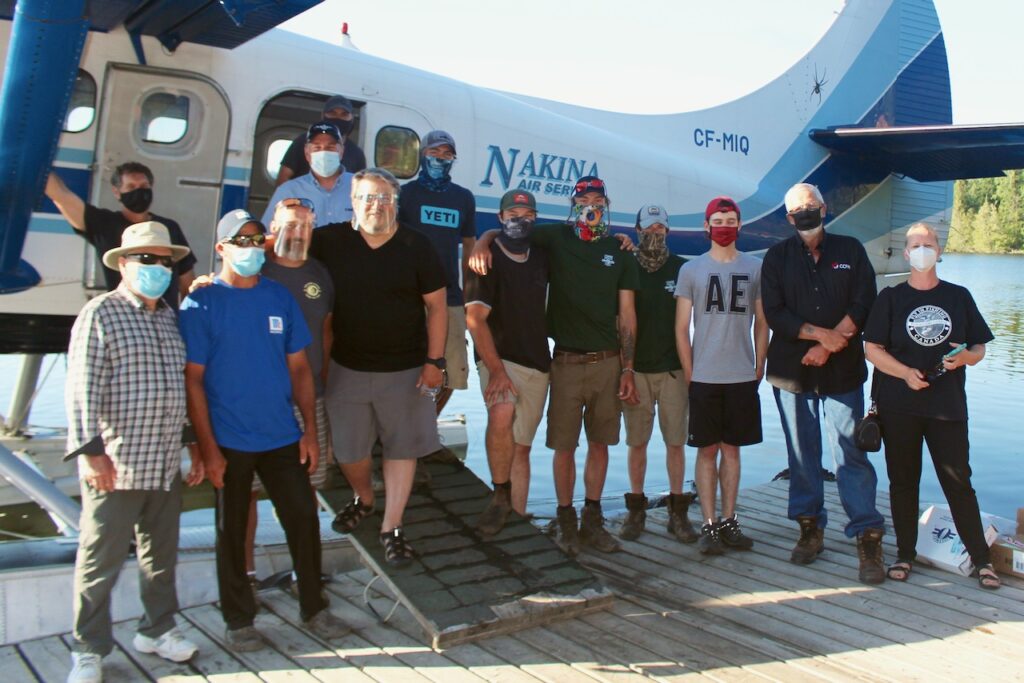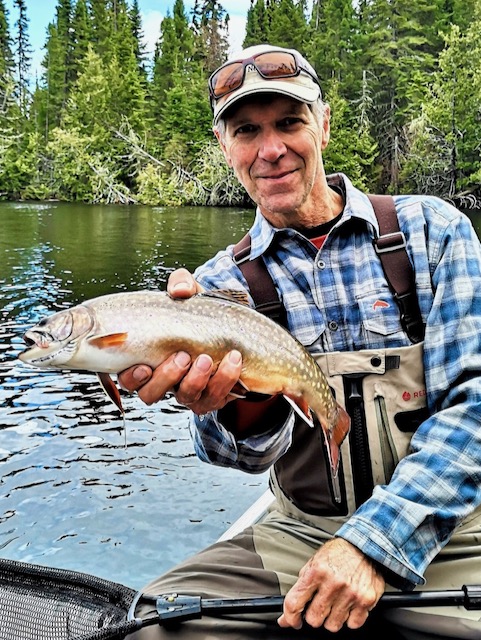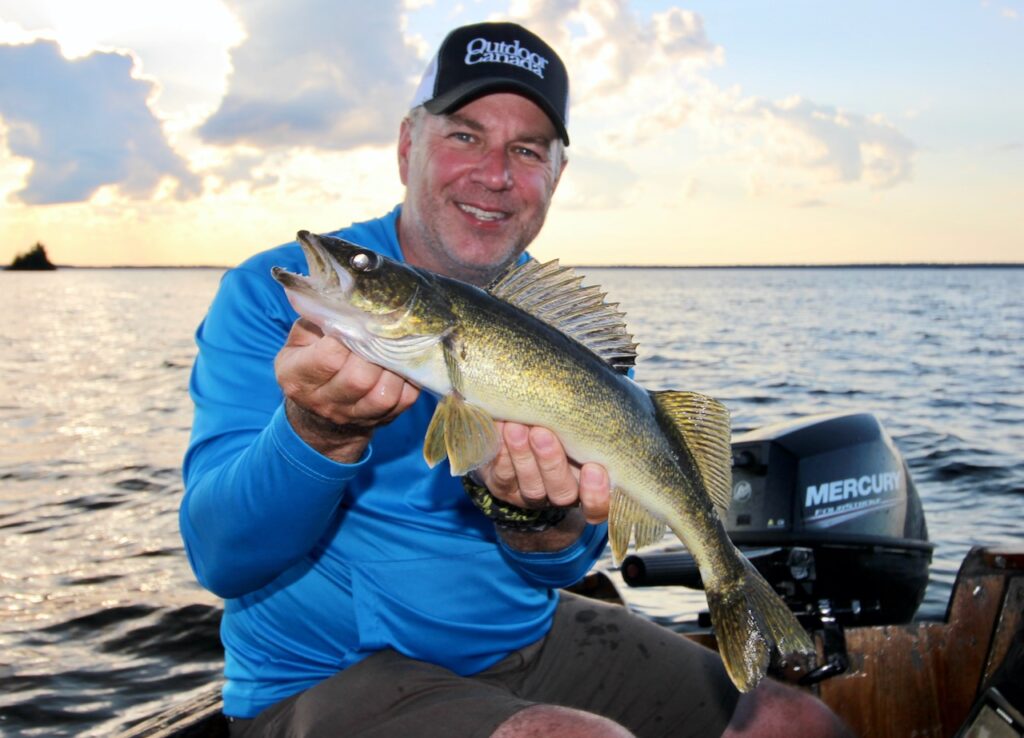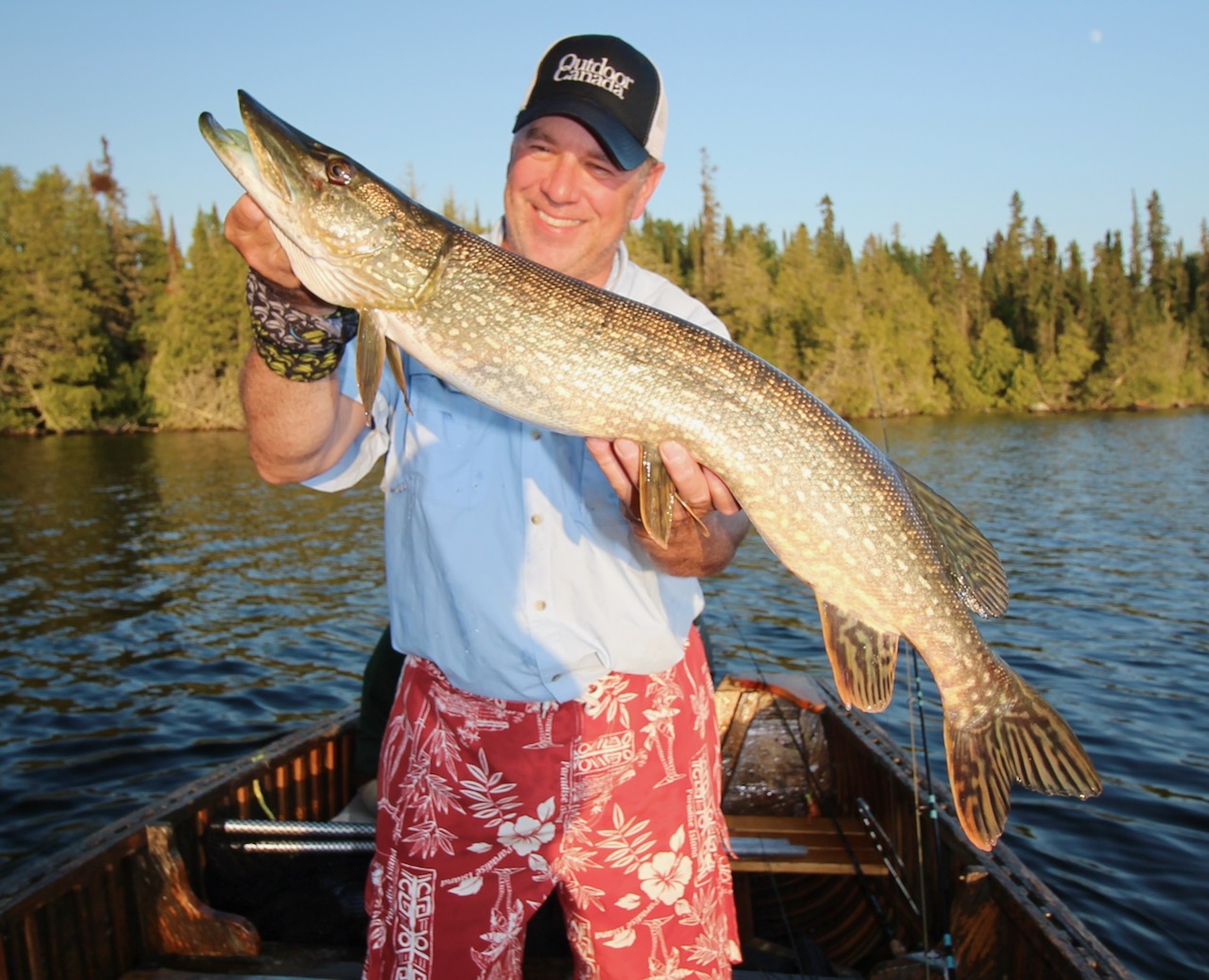Advertisement

I’ve definitely had my share of fishing trips where one day stands out because it was the only day I caught any fish. Not this time. During our first three days, my fishing partner Cameron Tait and I hauled in plenty of fish, including some pretty memorable ones. And, of course, in the messed up pandemic summer of 2020, we were grateful to even be visiting a remote fly-in lake. Northern Canada’s many fishing lodges and camps depend on guests from the U.S. and, to a lesser degree, other provinces. But with COVID-19 travel restrictions in place, those American guests couldn’t come, and most camps didn’t even open.
Thanks to some creative problem solving, Esnagami Wilderness Lodge was one of the few exceptions. After extensive consultation with public health officials, owner Eric Lund was able to adapt Esnagami’s food and lodging services to meet all COVID-19 protocols. So, in mid-June, a month later than usual, the lodge opened for Canadian guests only, with the full blessing of local authorities. Physical distancing dimmed the usually lively lodge social life a little, but not the fishing. And that, of course, is what really matters.
Advertisement
Boasting almost 200 kilometres of shoreline, Esnagami features a multitude of fish-holding bays, bars, weedbeds and drop-offs. It has northern pike of impressive numbers and sizes, and an almost unfathomable number of walleye. In addition, the lake drains into the Esnagami River, which offers excellent brook trout fishing early in the season. Two pound brookies are common, and they can get as husky as six pounds.

Before taking over Esnagami in 1989, Eric owned a road-access lodge on a lake with four other camps, where he watched as the fishery steadily diminished due to overharvesting. So, during his first season at Esnagami, Eric consulted with the local provincial government biologist and developed an ironclad conservation policy: anglers must release all walleye longer than 24 inches, pike longer than 30 inches and every brook rout. The results, three decades later, speak for themselves.
Despite a strong effort, the closest I got to Esnagami’s brook trout was a look at some photos Eric had snapped a week before I arrived. As the season progresses, the river’s flow lessens and warms, and the brookies retreat into unreachable areas. I knew my chances of success were slim in late June, but I had to give it a shot anyway. As expected, the trout had moved on, but a nice consolation was landing about 20 river-dwelling walleye on my 6-weight fly rod. And Cameron easily tripled that on his spinning gear.
Advertisement
Based in Winnipeg, Cameron is an international award-winning chef who, since 2016, has been creating amazing original fish and game recipes for this magazine. He’s also a skilled outdoorsman and a competitive walleye angler—one of those guys who just has the touch. Over and over during our trip, he seemed able to summon and seduce walleye with some kind of psychic power. One day, for example, we fished Betty Falls, an inflow into the main lake. There, for 30 minutes, I watched Cameron catch a walleye on literally every cast. I won’t say how many fish I landed in the same spot, but it was about 27 fewer than he did.

We also caught some husky mid-sized pike during our first three days, but the bigger specimens proved elusive. Esnagami’s trophy pike are relatively easy to locate in the spring, when they populate the shallow back bays. And thanks to an odd quirk of geography, the lake’s pike are also easy to pattern in summer. As every esox enthusiast knows, big pike constantly seek out their preferred water temperature of about 15ºC. So come summer, in all but the most northerly parts of Canada, lunker pike retreat to cool, deep water, where they’re tricker to catch. But Esnagami is full of spring holes constantly burbling up with icy cold, nutrient-laden water. Weedbeds sprout around these holes and, as the season progresses, that’s where the trophy pike hang out, usually in six to 10 feet of water. In fact, the majority of the lake’s trophy fish are typically landed in the heat of summer, and many on topwaters. As luck would have it, we were there during the transition period, when the fish were a bit harder to locate. Harder, but not impossible, as we would soon discover.
Advertisement

